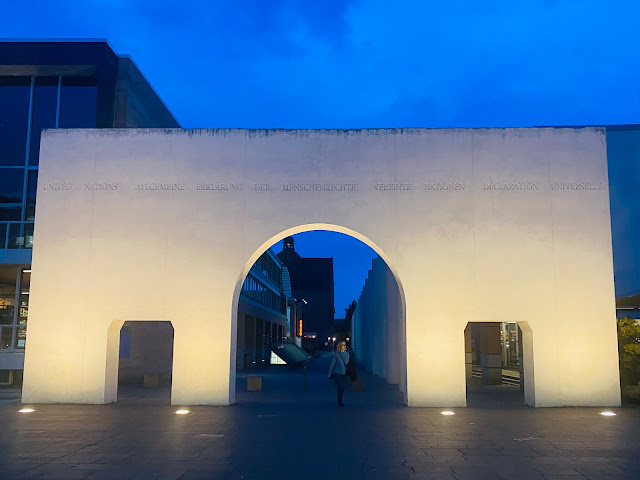When I checked in, the innkeeper at the Smile hotel had seemed taken aback when I told her I was going to the Memoriam after just visiting the Documentation Center. She urged me to visit the burgh, especially at night when it and many of the city's landmarks are illuminated. I entered the Old Town through the gate just across the street.
Much of it, like the stores and the "Way of Human Rights"--a 1993 attempt to re-brand the city, an almost surreal example of turning a lemon into lemonade--looks new.
But a lot doesn't, begging the question: how much of the Old Town has been restored and how in hell did they do it, if so? Where there's a triumphant will, I guess there's a way.
 |
| St. Lorenz Church |
 |
| Pegnitz River View |
 |
| Church of Our Lady |
 |
| Schöner Brunnen |
 |
| Rathaus |
 |
| St. Sebaldus Church |
Maybe I was exhausted but I didn't even notice the burg until I asked two young women for directions. "It's right up the hill," they said pointing to what I thought must be another city gate.
In fact, the burg was among Europe's most heavily fortified castles in the Middle Ages, when it was temporarily inhabited by various Holy Roman Emperors on their way to and fro (the empire lacked a capital), as a kind of royal hotel. Although the burg lost its importance after the Thirty Years War, the Nazis "returned it to its original state" for propagandistic reasons, and it was rebuilt again after World War II. Some history dies hard.
Enough photos for one night! I had a long walk back to the hotel, and it was getting late.
More Bavaria:









No comments:
Post a Comment